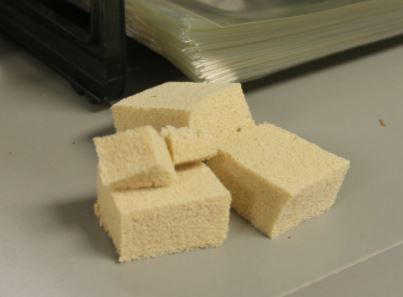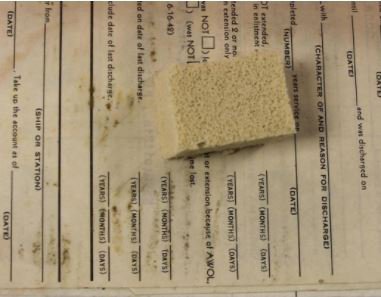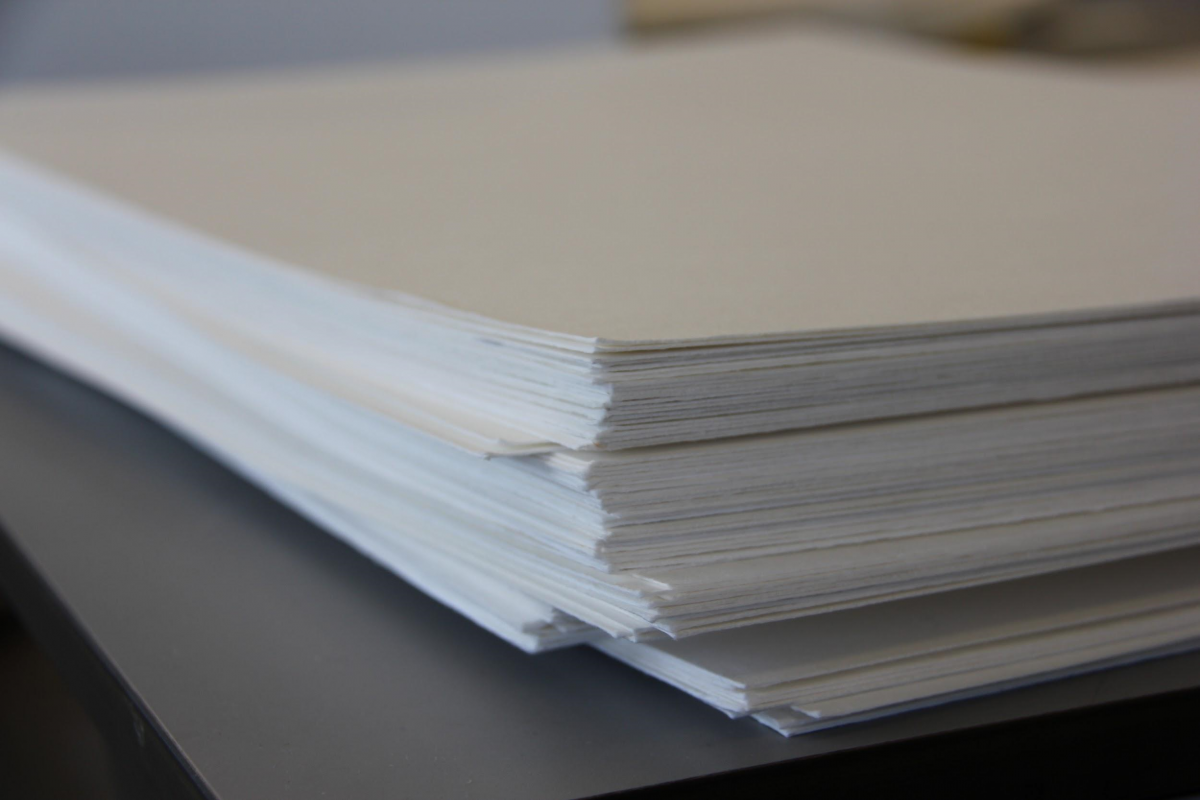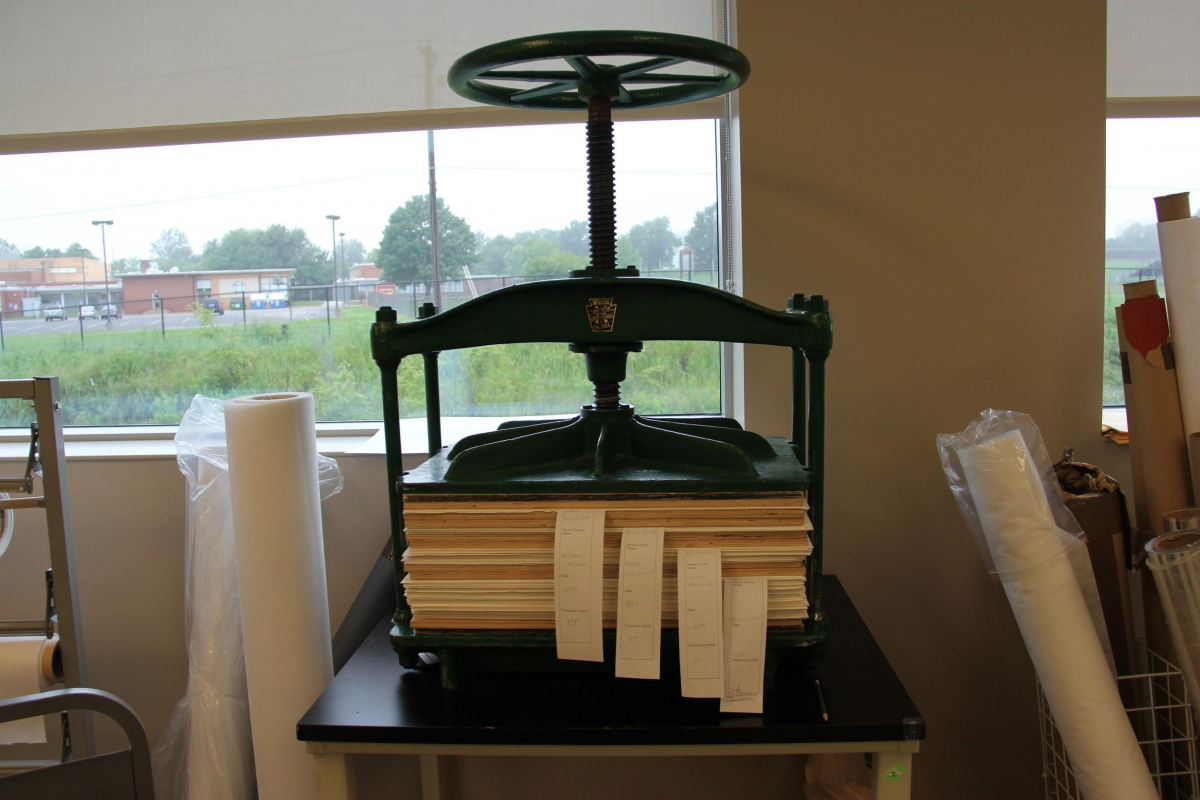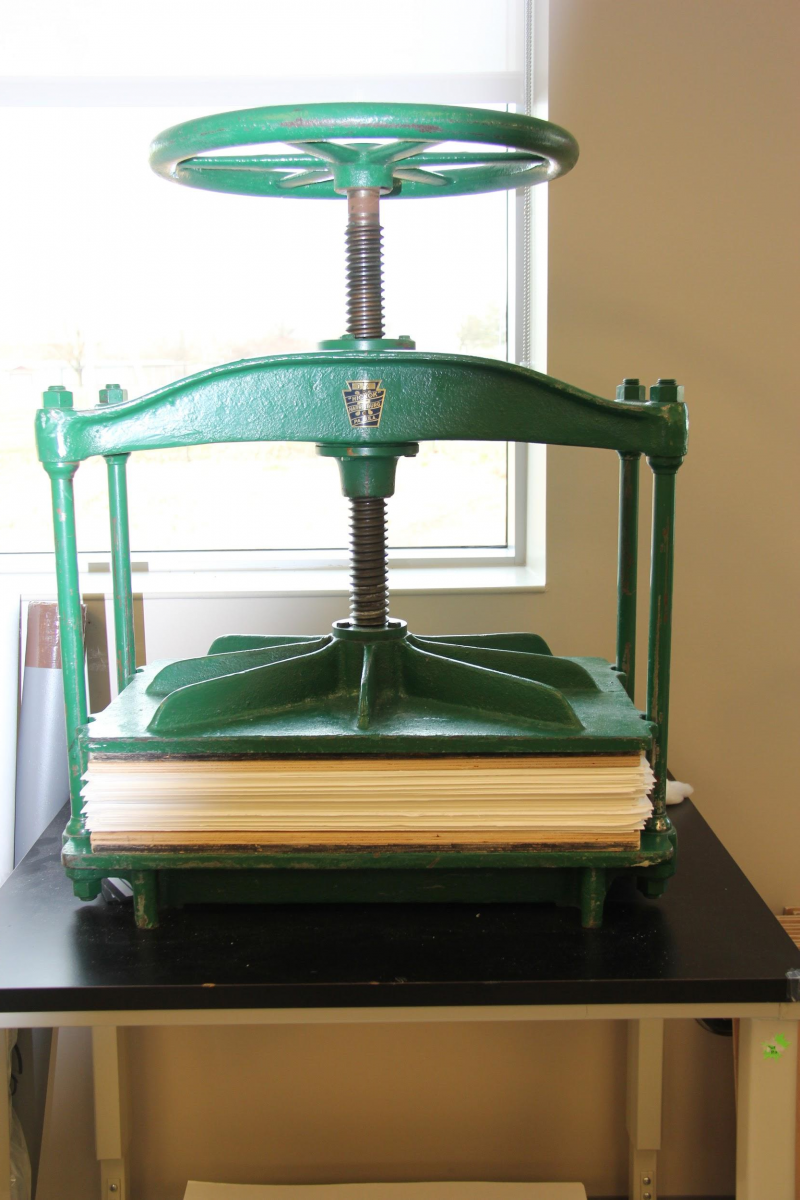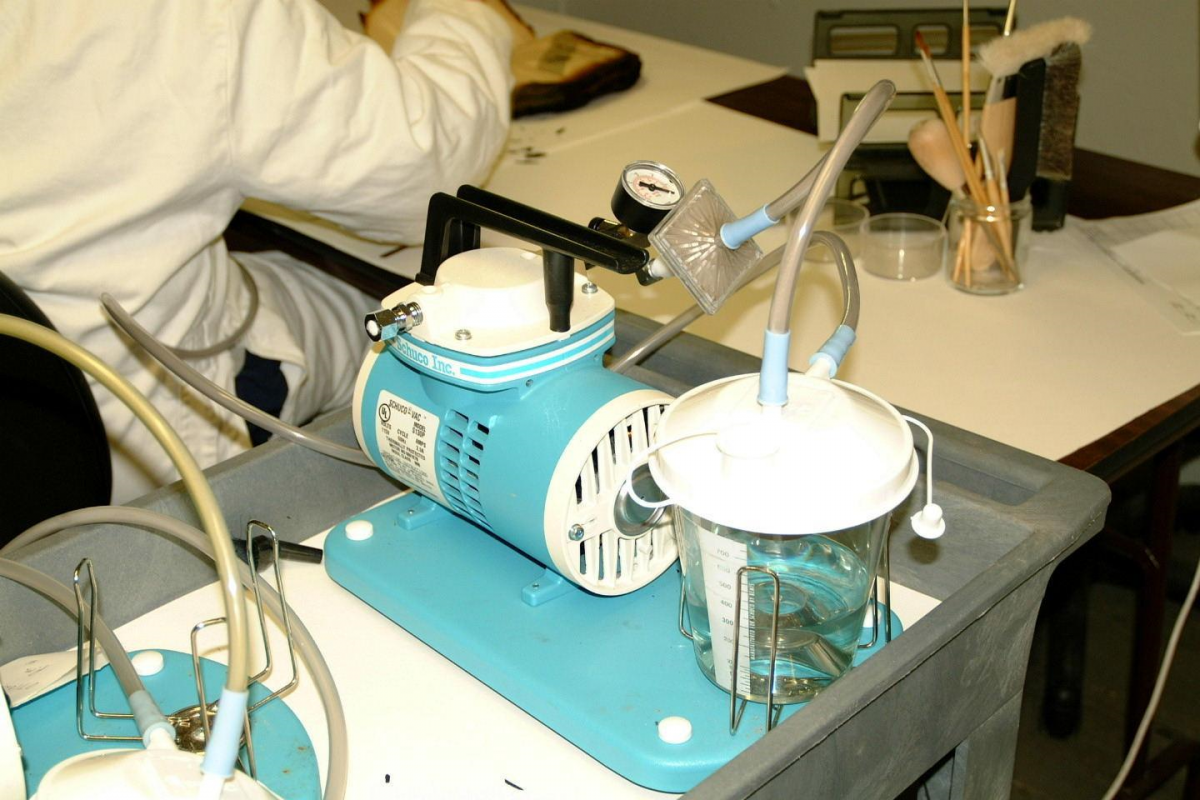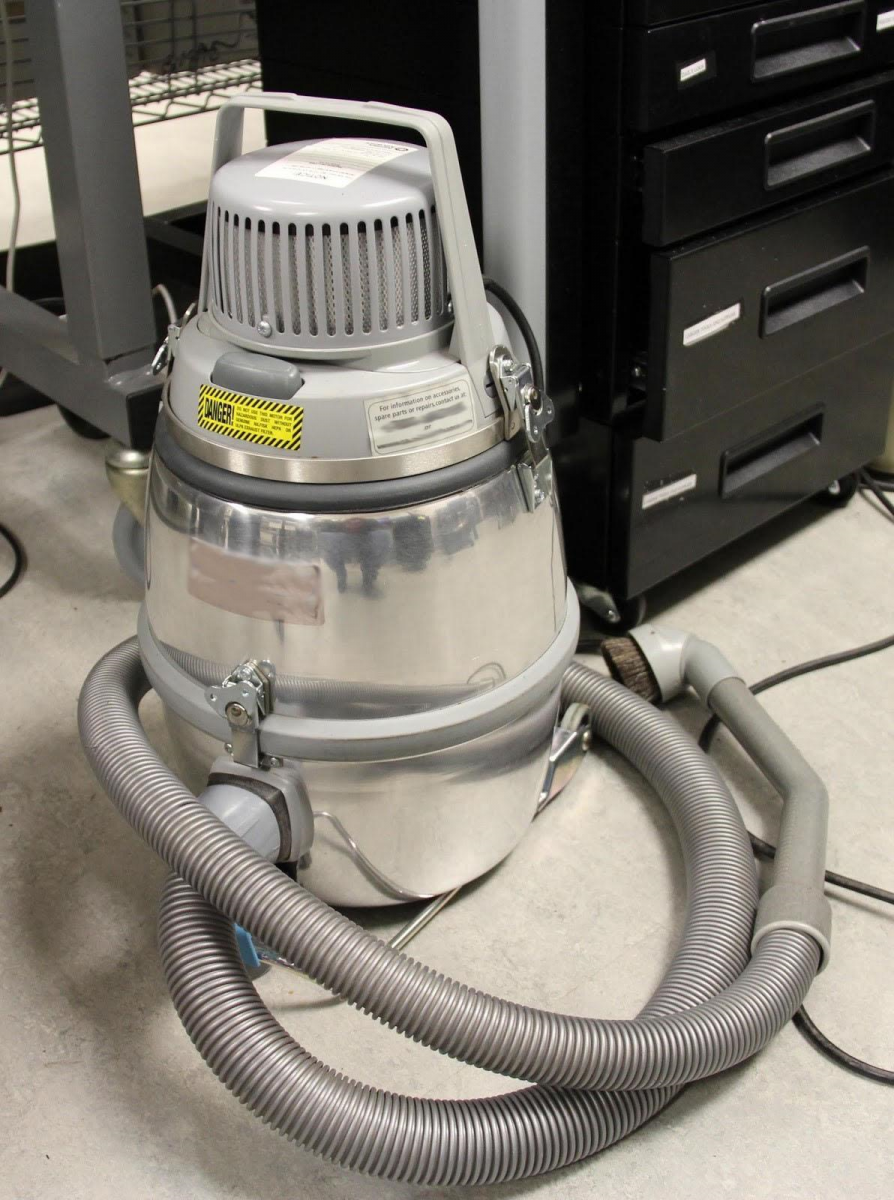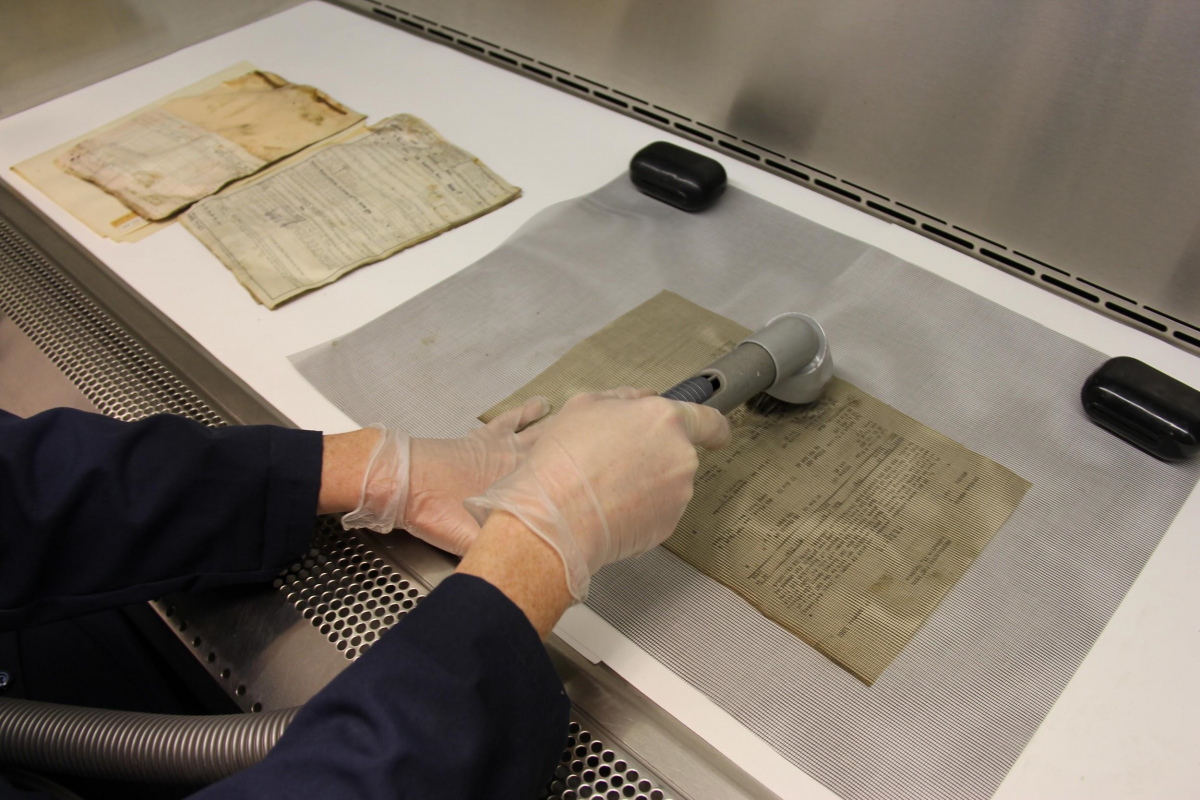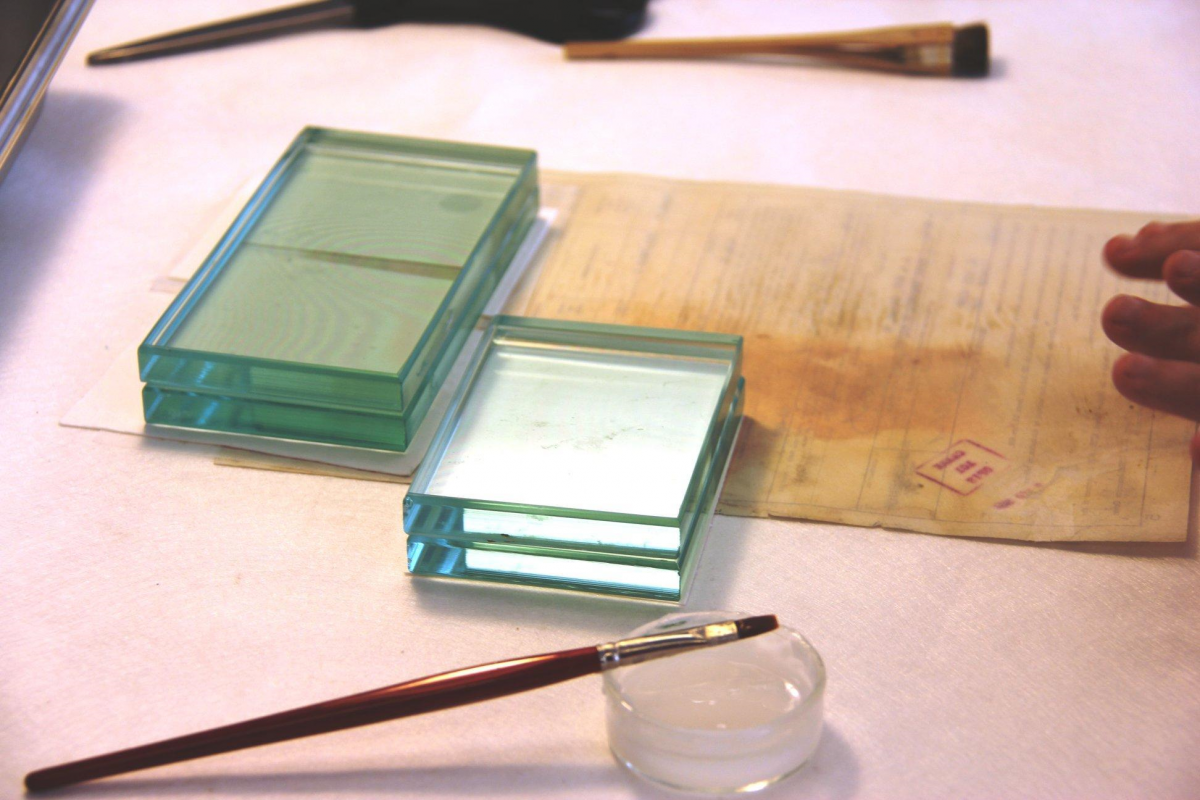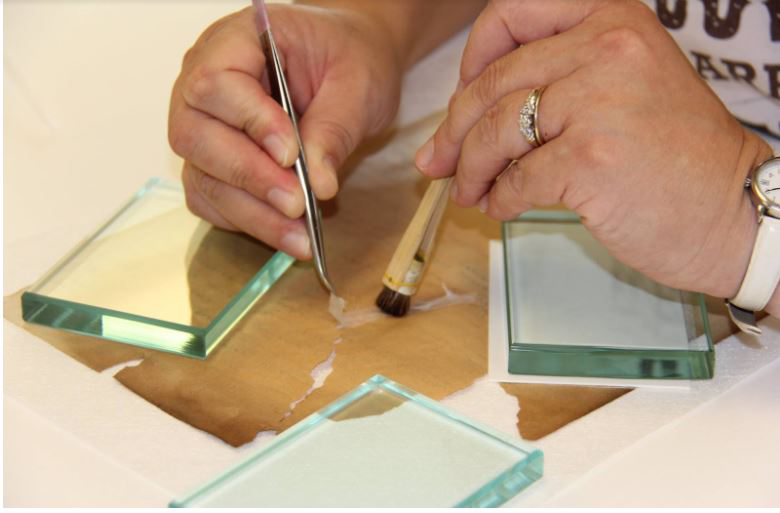
A Few of Our Favorite Tools
Vinyl Sponge Eraser
Using a gentle blotting motion, soft erasers allow us to remove contaminants from the surface of the paper, requiring less use of brushes and vacuums. Our favorite eraser is made of vinyl just like most other common erasers but the vinyl is foamed during manufacture, making it spongy. The soft texture means it is less likely to accidentally tear the paper. Contaminants cling to the porous texture of the sponged-vinyl allowing us to remove mold and soot from the surface of the paper.
Blotter Board
Blotter is non-woven, extra-thick, absorbent paper that comes in large sheets, cut down and used in a variety of ways. Large pieces are used in the book press to ensure humidified papers dry flat. Small pieces of blotter and non-woven polypropylene or polyester fabric are used during mending to keep the mends aligned while the adhesive sets. The blotter draws out moisture introduced during humidification or mending treatments as the documents dry under pressure.
Book Press
Our book presses get used extensively in our lab even though we don’t bind books! After the paper is humidified, we dry it under pressure. Documents are placed between blotters, stacked between press boards, and placed in one of our presses.
HEPA Vacuums
What is a HEPA vacuum exactly? A vacuum with a High Efficiency Particulate Air (HEPA) filter captures 99.97% of particles down to 0.3 microns in diameter, preventing these particles from becoming airborne. In our Decontamination Lab, we work with a lot of mold and soot contaminated documents from the 1973 fire, and HEPA vacuums are a necessity. Suction level is extremely important when working with fragile paper. In addition to small aspirating vacuums, we also use larger, variable speed vacuums. Designed by the medical industry, the aspirating vacuum has a lower suction and smaller hose than many HEPA vacuums. This tool is preferred when a sponge and blotting motion might cause further damage to paper surfaces. When mold or other surface contamination is widespread and the paper condition allows, we turn to our larger vacuums. Unlike the smaller vacuums with a nozzle that can target specific areas, the larger vacuum must be adjusted to perform work on a full sheet of paper. Our solution is to use mesh screens similar to window screens in your home! The mesh is placed over documents being cleaned and held in place with weights. With the mesh secured over documents, we can safely use the larger nozzle and suction of the variable speed vacuum.
Glass or Acrylic Weights
Glass or acrylic weights are used in mending work as well as in digitization. These weights are used in combination with non-woven blotter and fabrics for drying. In addition, weights can be used to make sure small fragments don’t fly away. The weights also come in handy to hold rolled-back sheets in place when using an overhead camera.
Tweezers and Japanese Stencil Brush
When working with small pieces of tissue wet with paste, we love using our curved tip tweezers. The curve helps us see where to place the tissue onto the mend. Once the tissue is in place, we use our Japanese stencil brush to gently tamp the mend securely into place.
